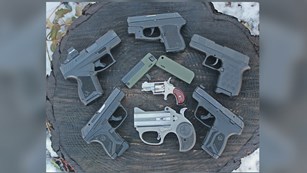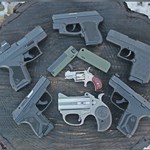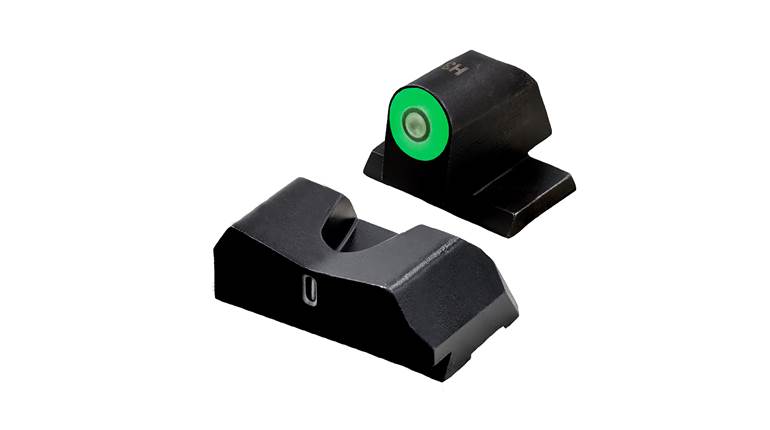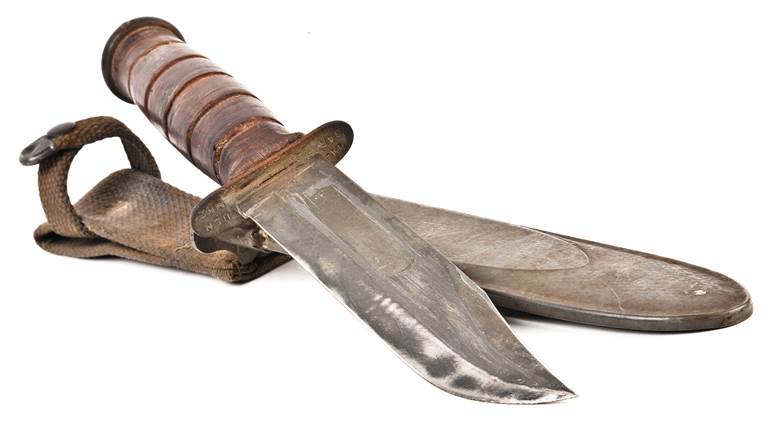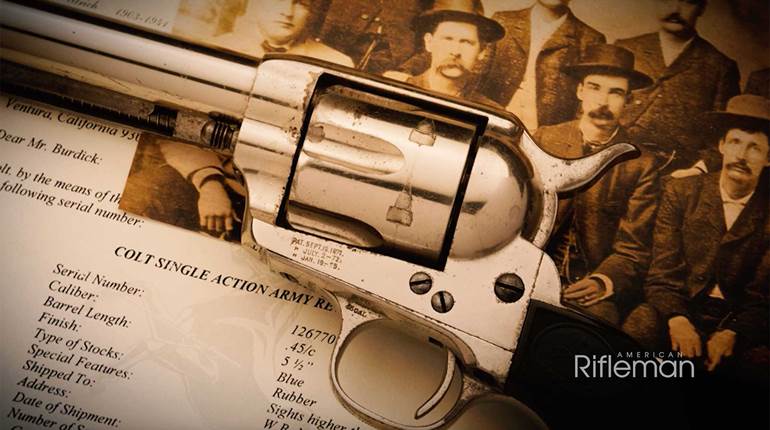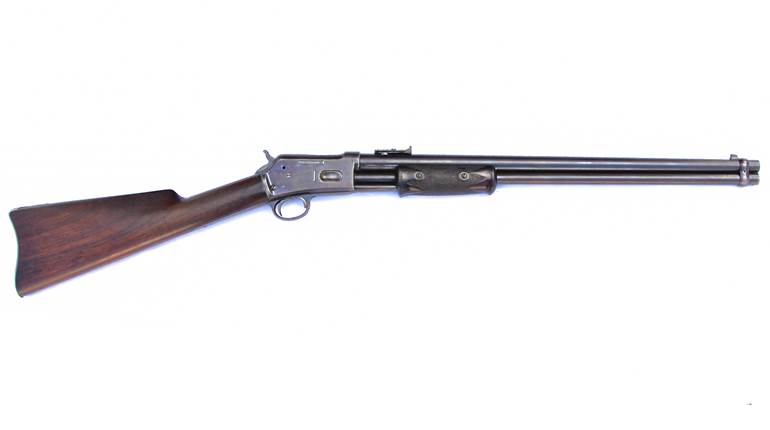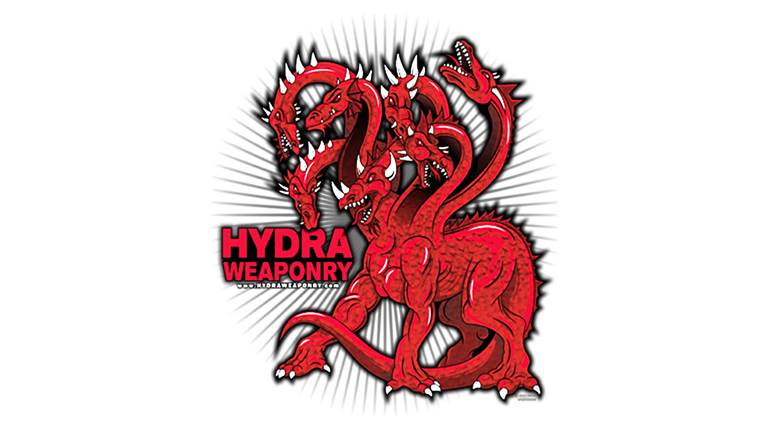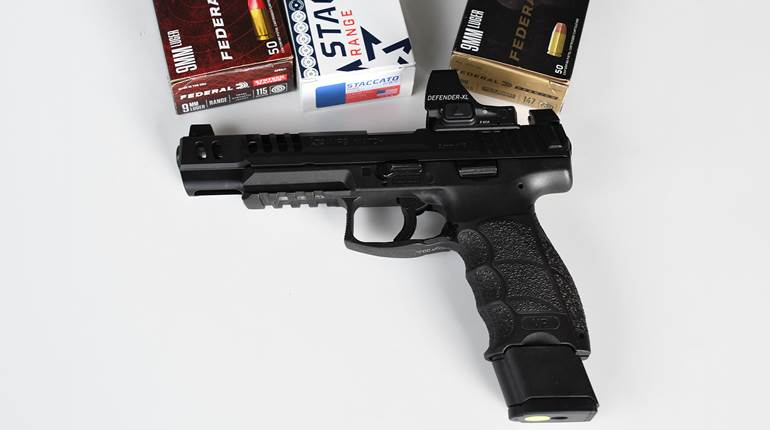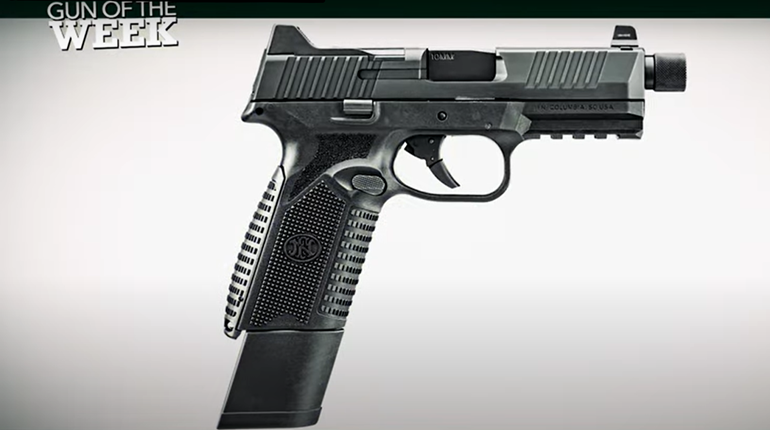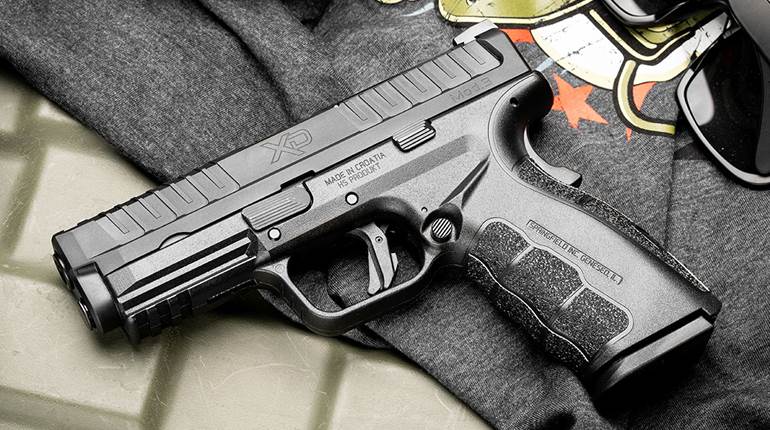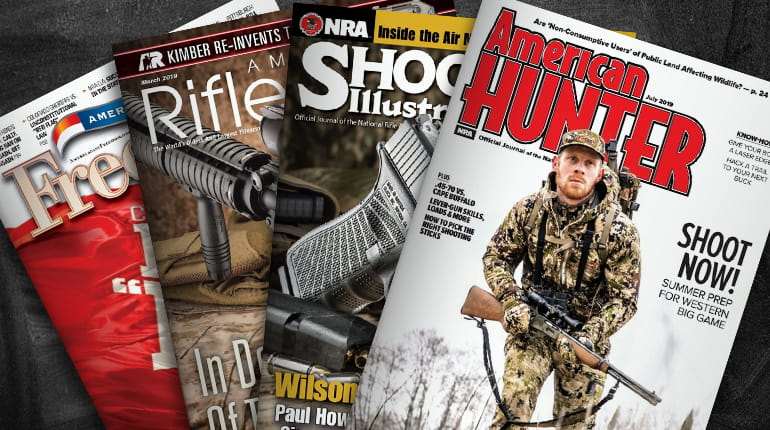
In less than 10 years, Springfield Armory's XD has gone from being a nearly unknown European semi-automatic pistol to a strong contender in the American pistol market. That can't happen unless the basic gun has something going for it. It does—a combination of the most desired features by today's police, military and civilian users. The pistol business has been competitive in the last 20 years, and even the most casual observer is aware that the features that sell pistols are polymer construction, high-capacity magazines, simplified trigger systems and advanced ergonomics. The XD has all of these and is offered in a variety of calibers and sizes.
It did not begin that way. The basic XD design came from Croatia, where it was developed as the HS 2000, a 9 mm service pistol for that nation' s military. Shortly thereafter, some of the guns made their way to America and were sold by a company called HS America. I remember seeing the new gun in an obscure corner of the SHOT Show before it became well known. Its best feature was a highly ergonomic shape. Before very many of the HS 2000s were in circulation, the gun-savvy marketing people at Springfield Armory quickly negotiated for the rights to import and sell the gun in this country.
Now marked with the Springfield logo and called the XD (for X-Treme Duty), the innovative pistol went forward with the complete service and distribution network of a major American maker. In just a few years, it was challenging the leaders in the field. With an ongoing string of evolving enhancements and new options, this is the state of the XD in the first decade of the 21st century—thriving in both its original and enhanced XD(M) guises and selling well for Springfield.
Much about the XD is characteristic of the modern pistol. A recoil-operated semi-automatic, the XD feeds from a double-column magazine in the butt. Measuring 5.76" high by 7.2" long and weighing about 23 ozs. empty, the basic XD falls into the broad category of full-size service handguns. The first of the XD samples were 9 mms, but Springfield has broadened the line to include .40 S&Ws, .357 SIGs, .45 ACPs and a few .45 GAPs. The company has also introduced so many size and control options that referencing the XD as an individual gun is not exactly accurate. It is more like a family of guns, all with the same basic operating system. All members of the XD family use molded polymer receivers, a system that has many advantages. It is also possible to get a slimmer and more graceful shape to the butt with polymer because no additional grip plates are required. Stippled or checkered grasping surfaces are molded right in.
Polymer also facilitates the use of high-capacity magazines, but the thicker the magazine, the wider the butt and the harder the gun is to handle. Polymer permits thin side walls on the grip/magazine housing and an overall thinner gun. And in today's handgunning world, a new pistol without a high-capacity magazine (unless it's a little-bitty hideout) won't sell.
Modern pistols also have simplified trigger systems, and the XD is no exception. Called the USA system, the XD trigger works with the same trigger action for every shot. This simplicity of action is a major sales point because it is easy to teach and simple to use in a crisis. Finally, the XD excels in ergonomics. This is a pistol that feels at home in the hands of most handgunners.
Originally, the XD was made only as a 9 mm pistol with 4" barrel and slide (March 2002, p. 56). Other popular calibers—.40 S&W and .357 SIG—followed very quickly. All three of these calibers could be fitted into the same receiver and magazine well. A 9 mm slide was different from a .40/.357 because the smaller cartridge required a different breech face, and magazines for the 9 mms had differently shaped feed lips. The beauty of the system was that the same basic receiver could be used to build a gun in any one of the three calibers. When the .45 GAP cartridge was introduced in 2003, Springfield quickly had yet another version of the basic XD available for this short cartridge with .45 ACP power. The round is approximately the same overall length as the 9 mm, .40 S&W and .357 SIG. This was an interesting gun/cartridge combination, but many shooters who liked the XD system had been badgering Springfield to bring out the gun in a full-blown .45 ACP.
In 2006, Springfield responded with the XD 45 in .45 ACP, and there's a lot to like in the XD .45. This is a 13-plus-one .45 ACP, and the butt section is not perceptibly larger than the other (smaller) calibers. It was a remarkable piece of engineering that was described in detail in these pages (April 2006, p. 40) at the time the gun was introduced. Shooters can rely on the fact that the XD pistol feels the same in his or her hand, regardless of caliber.
As this is written—in late 2008—the XD line has expanded in several ways. There are a number of distinctively different XD models, including color variations. Slides are available in black Melonite and stainless steel, receivers in black, tan and dark earth colors. Aside from the aesthetics, the pistol may be had with barrel and slide units of 3", 4" or 5" lengths.
There are also receivers of two heights. For some situations, a plain-clothes officer might want a pistol with a short butt that's easier to hide under a coat but with a full-length barrel that gives him or her a long sight radius and full ballistic performance. One interesting variation is a pistol with a short receiver and a long slide, but equipped with both a short magazine and a long one. At its bottom end, the long magazine comes with a collar that fills out the shape of a long receiver. The idea is to carry the gun with the short, lower-capacity magazine and shift to the higher-capacity, better-handling long one when the trouble comes.
Springfield's literature makes much of the gun's so-called "Point and Shoot" ergonomics. Rightfully so, since the gun's shape is very shootable. The grip angle is close to that of the M1911 pistol, and the butt section is nicely shaped for use with a trigger that moves through a short arc. At the top end of the backstrap, there is a pocket for the web of the shooter's hand. It is at a level higher than the curve of the trigger, which puts the shooter's trigger finger in a position of improved leverage when it comes to sweeping the trigger back. Another salient feature of the ergonomic grip is the completely ambidextrous magazine catch. From either side, a push on the magazine catch releases the magazine to drop cleanly away from the gun. Also, note the ambidextrous thumb rests on both sides of the butt. Oval depressions with a pronounced swell to their lower edge, these work well for the thumb on one side of the butt and the trigger finger on the other. There is a great deal of advanced ergonomics in the receiver of this gun, but the real marvel is what's inside.
Although it has been called a double-action-only, the XD trigger isn't—so Springfield's own terminology is apropos. The "USA" means "Ultra Safety Assurance." When the shooter racks the slide on an XD and runs a round into the chamber, the striker in the slide is cocked. The trigger, pivoted from the top of the trigger guard, has an articulated safety in its face. There is also a grip safety in the backstrap set up to prevent striker movement unless the gun is held in a positive grasp. A positive interior drop safety keeps the striker locked in place in the event the gun is dropped. Although the pistol normally comes with no manual safety, the trio of safeties I have mentioned contribute to a system that is as safe as anything on the market. When the shooter presses that trigger through its arc, the pressure clears the mechanical safeties and continued pressure releases the striker to fire the gun. Trigger pressure is 6 to 7 lbs. and is very smooth. It's safe and easy to shoot. With a little practice, fast pairs are a breeze.
The demand for the XD pistol continues to climb, and the increased popularity has prompted more and more available options. In addition to the many variations already mentioned, Springfield also offers the XD with an ambidextrous manual safety for those shooters or police and military agencies that require the feature. More recently, Springfield unveiled a new XD variant called the XD(M), (September 2008, p. 64). It is essentially an improved version—better accuracy, improved trigger action, enhanced ergonomics and aesthetics, even higher capacities—which sells at a somewhat higher price. The earlier XDs from which the XD(M) evolved are still in the line. A Springfield spokesman told me emphatically that they will stay there. Due to that commitment, American shooters can anticipate an ever-increasing array of models and options in Springfield's family of XD pistols.


